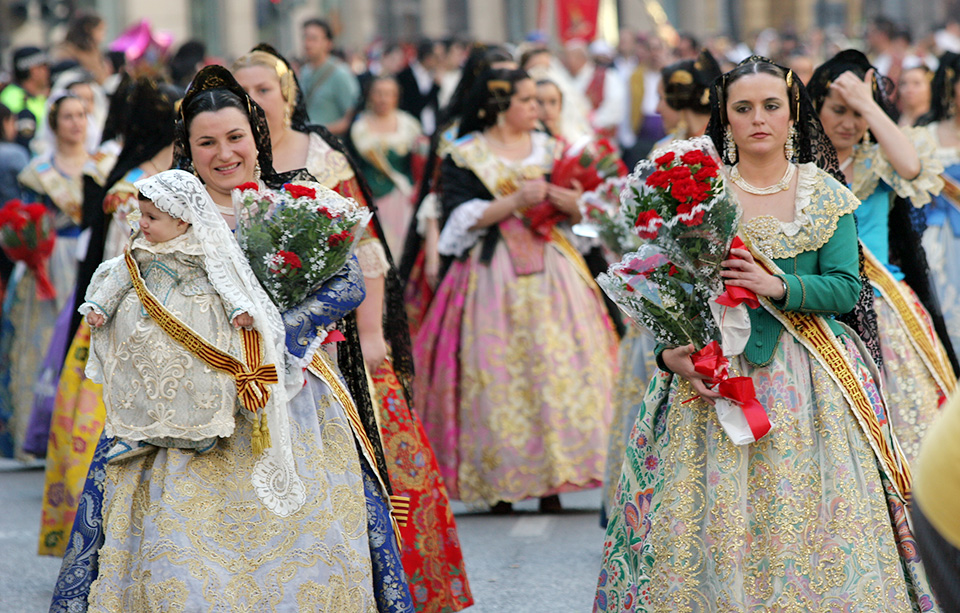If there is one event that stands out above all others, it is the floral offering to the Virgen de los Desamparados (Our Lady of the Forsaken); all the falla groups meet at their casal (headquarters), dressed in traditional costume. From all parts of the city the groups converge on the Plaza de la Virgen, accompanied by musical groups and carrying bunches of flowers to be placed at the feet of the figure of the Virgin. It is a stunning ceremony that converts this central city square into a wonderful flower show.
In a profusion of beauty like few others, the Fallas festivity has always included a flower offering to Our Lady of the Forsaken since 1945. Two full afternoons are dedicated to the parades composed of all the Fallas Commissions, headed by the Fallas Queens and their Courts of Honour followed by standard bearers and marching bands in a ceremony in which traditional costumes and flower bouquets are the major attractions.
Participants carry baskets full of flowers and sometimes little allegorical temples made from carnations, gladioli, cyclamens and lilies. These are enchanting afternoons, replete with the rhythms and strains of marching bands continuously playing "El Fallero" by the master Serrano and "Valencia" by the composer Padilla – with lots of pageantry and applause, because "falleros" and "falleras" simply love seeing and being seen, and ladies' costumes are of course very much a part of the picture.
Guarded by the Miguelete tower, the Plaza de la Virgen is transformed into a flower garden during the offering. The façade of the basilica becomes a floral tapestry that covers the entire wall, giving shape to a huge representation of Our Lady. In the centre of the plaza, a 14m high wooden structure is set up, on which agile climbers insert the flower offerings as they are thrown up to them, creating a gigantic effigy of Our Lady.
It's well worth a visit to Valencia during Fallas, if only to see this prodigious offering of flowers which the sun will soon wilt after a mere 24 hours.
Providing the music are traditional chirimias and drums, and resounding throughout the city are Spanish rumbas and boleros, marches and waltzes, or modern rock music – each Fallas Commission does its own thing.
Related articles
- The Fallas Festival
- La Crema: 19th of March St Joseph's day
- Events not to be missed during the Fallas





